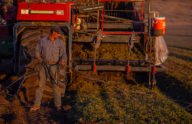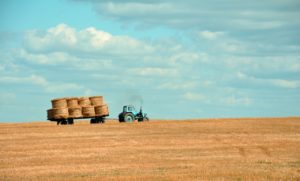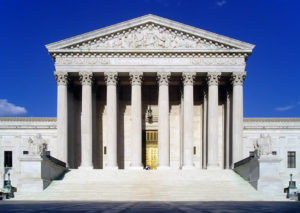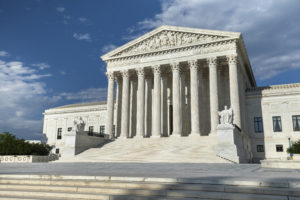Amicus Briefs for upcoming Cedar Point Supreme Court case show importance of property rights
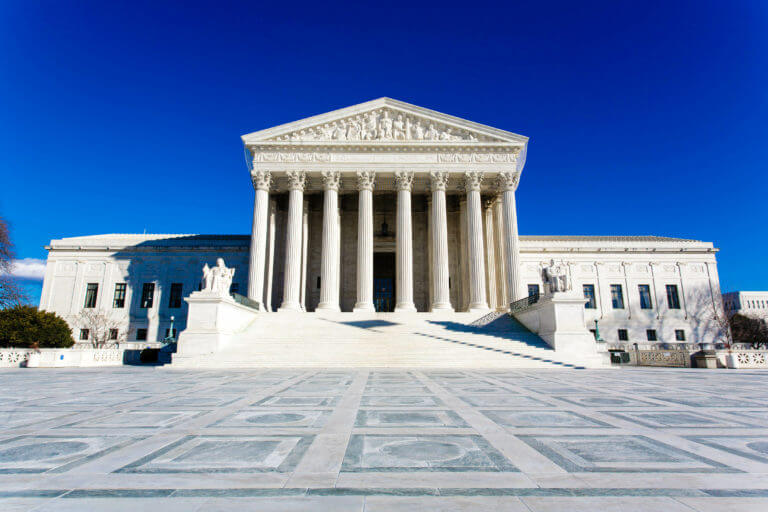
On March 22, my PLF colleague Senior Attorney Joshua Thompson will make arguments before the Supreme Court on behalf of the plaintiffs in the case of Cedar Point Nursery v. Hassid, one of the most important cases involving property rights in recent memory.
The owners of Cedar Point Nursery, an agricultural grower in Dorris, California, are challenging a state access regulation that allows union organizers to come onto their property unannounced for three hours per day, and 120 days per year. The regulation is a holdover from a different era. In the decades before the regulation was enacted, workers sometimes lived on their employers’ property with little to no access to the outside world. Today the Cedar Point employees, like nearly all farmworkers now, live in houses and hotels off site, and have access to alternative means of communication from the union, such as radio, TV, and social media.
PLF is fighting for the property rights of the growers, and to ensure that the fundamental right to exclude applies to the growers as it does to all Americans.
In addition to the arguments Joshua will be presenting before the Court, a number of amicus briefs filed in favor of our clients will also make important arguments on the significance of strong property rights. These “amicus briefs” (an abbreviation of the Latin “amicus curiae,” or “friend of the court”) are important in helping the Court understand the importance of the issues in the case.
A wide range of organizations and governments have filed friend-of-the-court briefs that urge the Court to rule in favor of PLF’s clients. Those 15 briefs cover a wide range of important issues in Cedar Point.
First, a number of briefs reinforce PLF’s primary argument that the access regulation should be viewed as a per se taking rather than a regulatory taking. Here’s the difference: When the government takes an interest in property, its action is generally considered a per se taking that triggers a categorical duty to compensate. Time limits on the taking go toward the amount of compensation, not to whether compensation is due.
Consider it this way: If the government takes your house for public use, everyone would agree that the government must pay you for its value. But what if the government takes your house only for summer months? California and the lower courts viewed that as a regulatory taking, which triggers a multi-factor balancing test famously hostile to property owners. PLF disagrees. We argue that government must compensate the property owner for a taking of property, regardless of whether that taking is limited in time or not.
- The United States, for instance, argues that PLF’s bright-line rule would be easily applied by courts in future cases. California’s proposed rule, on the other hand, would create “line-drawing problems” in “determining what level of access short of round-the-clock would effect a taking.”
- A brief from 11 states explains that the decisions of the lower courts are inconsistent with decisions from state courts in Oklahoma, Idaho, and many others. Precedent from those courts would have treated the access regulation as a per se taking, and required California to provide just compensation.
- The New England Legal Foundation examines a pair of cases from the early 20th century and explains that they dictate a ruling for the agricultural businesses in Cedar Point.
- Finally, the Institute for Justice (IJ) explains that the distinction between a per se rule of compensation and the multi-factor balancing test advanced by California is critical to property rights. Because property owners can lose millions of dollars in property value and not be afforded a penny in compensation under the multi-factor balancing test, IJ stresses that it “is crucial that this Court explicitly reaffirm that temporary physical invasions are not evaluated as regulatory taking, but under a more stringent and property-protective standard.”
Second, several briefs discuss the fundamental nature of the right to exclude. That right is perhaps the most basic attribute of private property, which loses its character if the owner did not have the right to exclude unwanted third parties.
- As a brief from Mountain States Legal Foundation put it, “There is no conception of private property rights that allows the government to snatch the right to exclude from the property owner’s bundle of sticks with impunity. Without the right to exclude, private property would not exist.”
- The Pelican Institute summarizes the historical foundations of the right to exclude, citing sources such as Blackstone, Grotius, and Roman law.
- A brief from the Western Growers Association and other agricultural groups underscored the modern courts’ recognition of the importance of the right to exclude. Quoting a case from the Court of Appeals for the Federal Circuit, the brief stated: “The intruder who enters clothed in the robes of authority in broad daylight commits no less an invasion of these rights than if he sneaks in in the night wearing a burglar’s mask.”
- The Cato Institute and NFIB Small Business Legal Center put into context laws that seemingly disturb the right to exclude. They observed that the “absolute character of the right to exclude does not mean that all interferences require compensation. Many interferences are compensated through reciprocal advantages, while others only appear to be interferences but are in reality restricting property to non-harmful uses (including uses that impede public benefits).”
- One Supreme Court decision often cited by California in attempting to limit Petitioners’ right to exclude is PruneYard Shopping Center v. Robins. In PruneYard, the Court rejected a shopping center owner’s claim that California’s requirement that he permit certain expressive speech on his property effected a taking. As PLF explains, subsequent cases have recognized that the reach of PruneYard extends only to places of public accommodation, such as restaurants and shopping malls. But as Americans for Prosperity Foundation explains, even that may not be enough. AFP’s brief asks the Court to revisit its decision in PruneYard.
- The Buckeye Institute takes a similar approach. It notes that the Supreme Court’s “takings jurisprudence has also expanded in ways that cannot reasonably be reconciled with PruneYard.”
Third, the access regulation impinges on a property owner’s right to exclude far more than laws allowing government inspectors to access certain commercial facilities.
- The brief from the U.S. Chamber of Commerce highlights the differences, and argues that “holding that California effected a per se taking here would not threaten traditional regulatory regimes that call for governmental inspectors to access private property.” The brief notes that “reasonable government inspections are generally lawful under either the unconstitutional conditions doctrine, which permits the government to condition grants of licenses on grantees’ willingness to allow reasonable inspections, or the Fourth Amendment, which permits the government to conduct reasonable searches in furtherance of unearthing potential criminal or dangerous activity.”
Fourth, multiple briefs argue that the taking in this case should be invalidated because it fails to comply with the “public use” requirement. The Fifth Amendment does not allow the government to take property any time it wishes; any taking of property must be for public use.
- A brief from the American Farm Bureau Federation explains that the access regulation does not pursue a public use or purpose, but provides an easement “for the benefit of a class of private individuals—union activists—and their private recruitment efforts.”
- The Center for Constitutional Jurisprudence adds that “a private organization is soliciting membership. The public is not allowed on the property. Nor does the public have any control over the private organization. In fact, union membership is not even open to any member of the public.”
Fifth, union organizers have many other ways of soliciting workers to join the union.
- The California Farm Bureau Federation highlights several other means by which the union communicates with agricultural workers in California. For instance, the union runs a network of three radio stations “that broadcast the union’s message to its target audience in heavily agricultural areas of California.”
- The Liberty Justice Center adds that even if California believed that union membership were an important public policy interest, that belief “does not confer an open-ended warrant to advance that interest by forcing an easement of Petitioners’ property without compensation.”
The friend-of-the-court briefs underscore the significance of this case for protecting private property rights. These briefs will be helpful to the Court as it considers the important issues in the case, and as it issues its decision later this summer.


